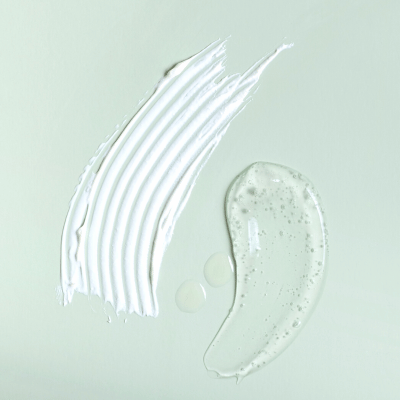NUTRIENTS FOR HEALTHY AND GLOWING SKIN PART 1
Dr Kate Norris shares her knowedge on which nutrients are required in your diet to achieve the desirable healthy glow.
Vitamin A
Vitamin A is one of the most widely acknowledged nutrients for healthy skin. Prescription retinoids have been used as effective treatments for severe acne and psoriasis for many years. Vitamin A influences the physiology of the skin by promoting epidermal differentiation, modulating dermal growth factors, inhibiting sebaceous gland activity, and suppressing androgen formation. Vitamin A is effective in preventing the formation of comedones (blocked pores) that cause the most forms of acne.
Lack of vitamin A causes the skin to become keratinised and scaly, with mucus secretion being suppressed. Rough, dry skin is a common sign of vitamin A deficiency, which often first appears as rough, raised bumps on the back of the arms (keratosis pilaris). Although this can also be linked to essential fatty acid deficiency, Vitamin C deficiency and gluten intolerance.
Preformed Vitamin A can be found in a variety of foods. The most vitamin A rich foods are liver and cod liver oil, but other sources include kidney, cream and butter from pastured cows, and egg yolks from pastured chickens. I recommend using cod liver oil if you wish to supplement, as this provides a balance of vitamin A and vitamin D that will reduce the risk of overdosing on vitamin A. Eating liver once or twice per week is a great dietary strategy for those looking to reduce and even eliminate stubborn acne. It is a fat soluble vitamin and so food sources should be eaten with some fat.
Plants contain beta-carotene (especially orange coloured vegetables, the precursor to active vitamin A (retinol). While beta-carotene is converted into vitamin A in humans, the conversion is inefficient in most people.
Omega-3 Fatty Acids
Omega-3 fatty acids anti-inflammatory, and the ratio of omega-6 to omega-3 polyunsaturated fatty acids (PUFAs) is important in inflammation. The ratio of omega-6 to omega-3 fatty acids in modern diets is commonly at least 10 to 1, compared with ratios of 2 to 1 in hunter gatherer populations. This altered ratio likely plays a role in the prevalence of inflammatory skin conditions such as acne, psoriasis, and rosacea. Increasing dietary omega-3 fats is an important step towards healing the skin. Consuming foods rich in omega-3 fatty acids may lead to smoother, younger-looking skin with a visible reduction in inflammatory skin conditions. These fats are found in cold water fatty fish such as sardines, salmon, mackerel, tuna, anchovies, and cod. The best vegetarian sources include chia, flax and hemp seeds. There are many reasons I recommend eating fish rather than taking fish oil to get these omega-3s, as there are many other nutrients in fish that are highly beneficial to skin health such as vitamin D and selenium. Avoiding industrial seed oils rich in omega-6 fatty acids can also help reduce inflammatory skin conditions.

Zinc
Zinc is an essential mineral that is an imperative part of many physiological functions in the body. In skin it assists in the proper structure of proteins and cell membranes, improves wound healing, has anti-inflammatory effects, and protects against UV radiation. Zinc can be very beneficial in acne and I find many of my acne patients have low zinc on testing. Unfortunately the Australian soils and deficient in zinc.
Dietary sources of zinc are best absorbed from animal sources, where it is not bound to phytates as in plant sources. Organ meat (kidney, liver), red meat (beef, lamb), and seafood (especially oysters, scallops, and other shellfish) are the highest animal sources of zinc. Plant foods such as pumpkin seeds and other nuts can also be high in zinc as well, but are less bioavailable, as the zinc is bound to phytates if not properly prepared by soaking/ activating. To get the most zinc from your diet, include shellfish, organ meats, and well sourced red meat (if acceptable) on a regular basis along with activated nuts and seeds.

Vitamin C
Vitamin C has a crucial role in the regulation of the structural protein collagen, which is necessary for the stability and elasticity of the skin. Increasing the amount of vitamin C in the diet can contribute to improved skin health and faster healing. Vitamin C may also help prevent and treat ultraviolet induced photodamage by acting as an antioxidant. Vitamin C has an important role in wound healing and can improve the proper formation of strong scar tissue. While true deficiency in Australia is uncommon, it is possible to be consuming sub-optimal levels, particularly in a diet with limited fruits and vegetables. The highest sources of vitamin C include capsicum, dark leafy greens, broccoli, brussels sprouts, kiwi, citrus fruits, and strawberries. Certain fresh herbs such as coriander, chives, thyme, basil and parsley are also high in vitamin C. Consuming a wide variety of colourful plant foods on a regular basis is the best way to get adequate vitamin C in your diet. It’s important to remember that vitamin C is sensitive to heat, so lightly cooking these plant foods or eating them raw is ideal to maximise your intake of this vitamin.
Kate Norris will share Part 2 of essential nutrients for a healthy glow in her next blog.
Other Blog Reading from Dr Kate Norris:
Dr Kate Norris on Skin Health and Nutrition Over View





 Webential
Webential